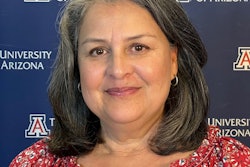A recent report from The Council of Graduate Schools (CGS) called, “Graduate Enrollment and Degrees: 1996-2006,” revealed a slight increase in minority participation in graduate schools, rising from 26 percent in 2005 to 28 percent in 2006.
Hispanic enrollment constituted about 8 percent of the total U.S. graduate enrollment, compared to 13 percent of the total for African-Americans, and 6 percent for Asian/Pacific Islanders.
Out of the total number of Hispanics enrolled, women represented 64 percent, while women made up 65 percent of Native Americans, 72 percent of African-Americans, 55 percent of Asians, and 61 percent of Whites enrolled.
“The ongoing gains in participation of women and minority students in graduate education are very encouraging,” said Debra W. Stewart, CGS President. “However, we must continue to expand the domestic pipeline, especially in science and engineering fields, in order to produce the highly qualified workforce required to maintain America’s competitiveness in the global economy.”
Based on the findings, Hispanic enrollment in graduate programs rose more quickly than any other race/ethnic group between 1996 and 2006. Hispanics averaged a five percent yearly increase in enrollment within the last decade.
Hispanics were represented mostly in education (30 percent), business (17 percent), and social science (11 percent); and least representative in biological sciences (4 percent), and engineering (4 percent).
Between 1996 and 2006, Hispanics increased the most in health sciences — by 11 percent — and increased the least in humanities and arts — by only 2 percent.
Since 1996, international student enrollment grew roughly four percent of the total average per year.
The report is based on an annual survey that is co-sponsored by the Graduate Record Examinations Board and CGS. Nearly 74 percent (680) of all U.S. institutions enrolling graduate students responded to the survey. These institutions grant roughly 75 percent of the nation’s earned master’s degrees and 90 percent of doctorates.
–Olivia Majesky-Pullmann
There are currently 0 comments on this story.
Click here to post a comment
© Copyright 2005 by DiverseEducation.com















